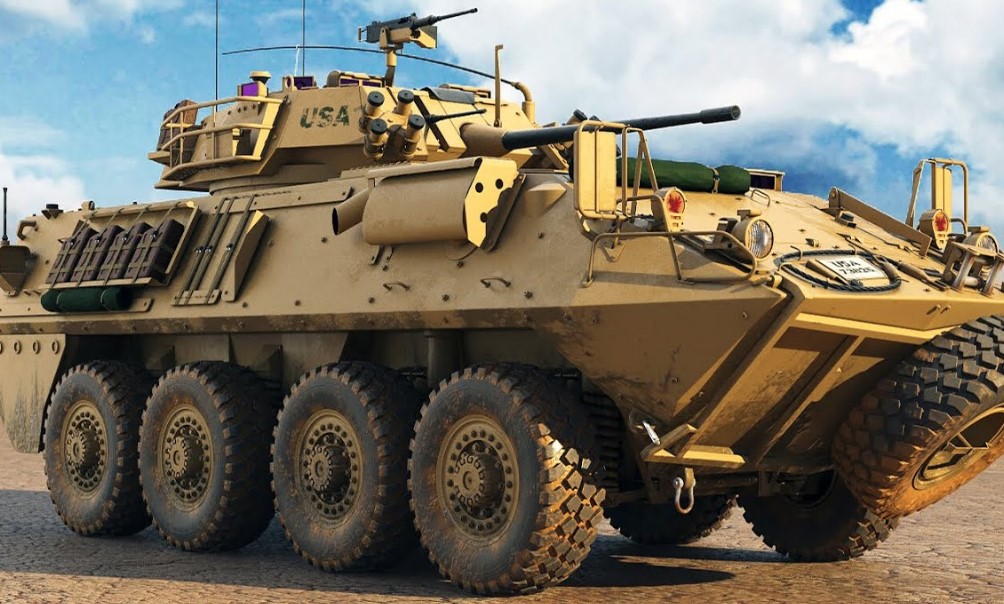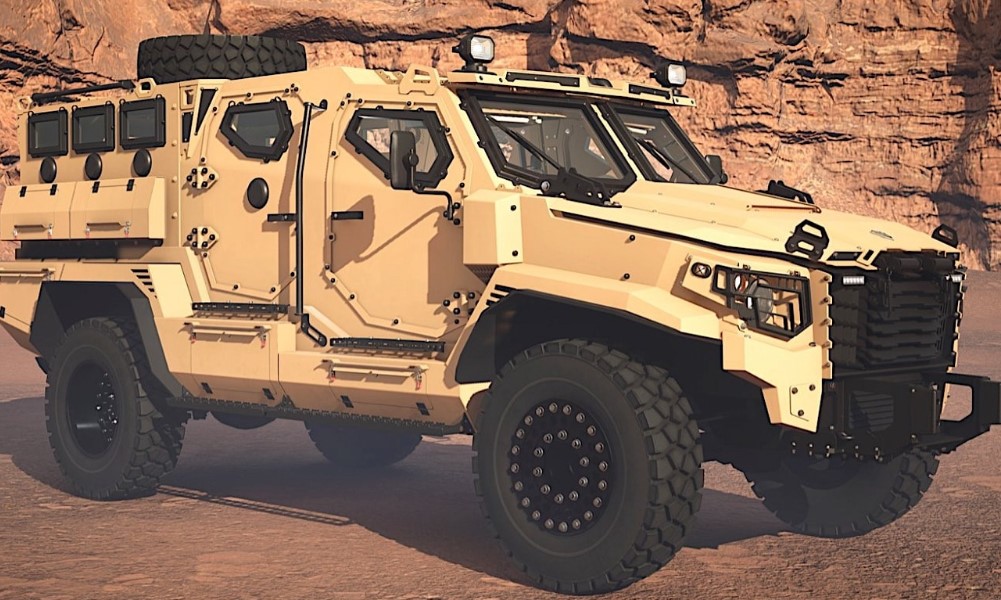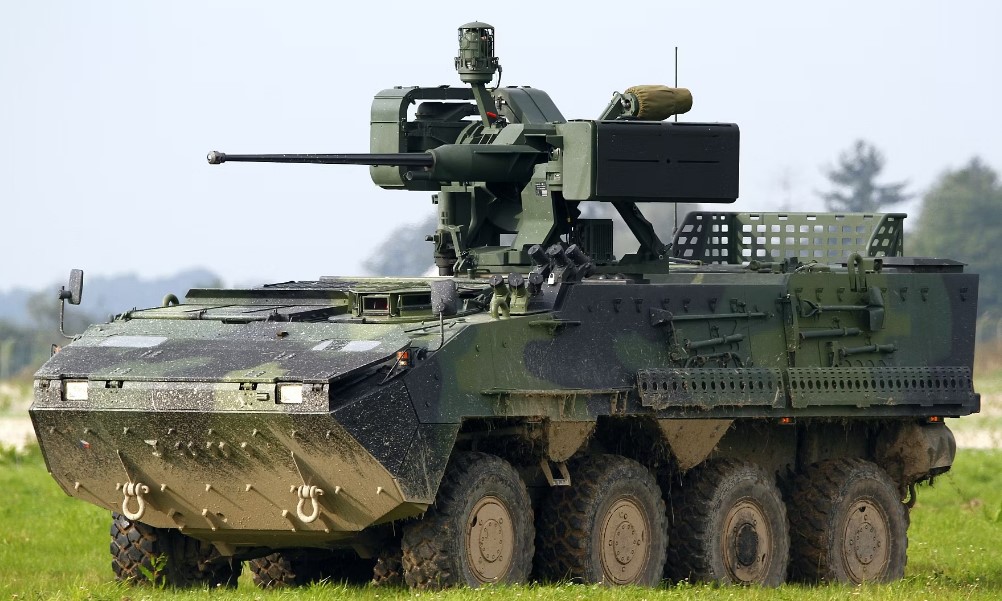Armored Personnel Carriers (APCs) are specialized military vehicles designed to protect troops while transporting them through hazardous environments. These vehicles are heavily armored and capable of moving across a variety of terrains, making them indispensable in both military and security operations. From providing protection against bullets and explosives to offering mobility in hostile conditions, APCs are designed to perform under the most demanding circumstances.
What is an Armored Personnel Carrier (APC)?

An Armored Personnel Carrier (APC) is a specialized military vehicle designed to transport troops safely through hostile environments. Unlike tanks, which are primarily built for combat, APCs focus on the secure movement of soldiers and equipment, offering a high level of protection from small arms fire, shrapnel, and explosive devices like landmines or improvised explosive devices (IEDs). The heavy armor on these vehicles ensures the safety of personnel, while their mobility allows them to traverse rough terrains such as deserts, forests, and urban landscapes.
APCs are typically equipped with all-terrain capabilities, including 6×6 or 8×8 wheel configurations, allowing them to maneuver in areas inaccessible to regular vehicles. Some models even have amphibious capabilities, enabling them to cross bodies of water. While their primary role is transportation, many APCs are armed with mounted machine guns or grenade launchers, providing defensive and offensive support when needed.
These vehicles are commonly used in military operations, law enforcement, and peacekeeping missions. They can also be adapted for various roles, such as medical evacuation, command centers, or logistical support. With their combination of protection, mobility, and versatility, APCs are crucial assets in modern military and security operations.
Key Features of Armored Personnel Carriers

Benefits of Using Armored Personnel Carriers

1. Increased Troop Safety
The primary advantage of an APC is its ability to protect personnel from enemy fire and other external threats. Whether in active combat zones or during peacekeeping missions, APCs provide a protective shell that allows soldiers to travel safely. The armor can withstand high-caliber bullets, shrapnel, and even explosive devices such as landmines or IEDs.
Additionally, modern APCs are designed with V-shaped hulls, which deflect the force of explosions away from the vehicle, reducing the risk of injury or death in case of a mine or IED detonation.
2. Mobility Across Challenging Terrain
APCs are engineered for mobility in hostile and inaccessible areas. Their powerful engines and specialized tires or tracks enable them to traverse rough terrains, including deserts, forests, mountains, and even urban environments where roads may be blocked or damaged. Some APCs can even swim across rivers, adding to their versatility in difficult combat situations.
3. Versatility in Roles
While the main role of an APC is to transport troops, many models can be modified for other uses. Some APCs are equipped to serve as ambulances, command centers, or recovery vehicles. The modular design of certain models allows them to switch roles as needed, making them a valuable asset in any military or security operation.
4. Firepower and Defense
Although APCs are not designed for direct combat like tanks, they often come with mounted weapon systems, such as heavy machine guns or grenade launchers, providing additional defense and firepower. These systems allow the vehicle to offer support in combat situations, engaging the enemy while protecting its occupants.
Top Armored Personnel Carrier Models and Their Specifications
1. M113 Armored Personnel Carrier
The M113 is one of the most well-known and widely used APCs globally. Originally designed in the 1960s, it has seen service in numerous conflicts, including the Vietnam War, the Gulf War, and the War in Afghanistan. The M113’s simplicity, durability, and ability to be modified make it a popular choice for many military forces.
- Website: General Dynamics
- Armor: Aluminum armor providing protection from small arms fire and shell fragments.
- Capacity: Can carry up to 11 soldiers, including the driver and commander.
- Engine: Diesel engine for increased fuel efficiency.
- Special Features: Known for being highly modifiable, with options for additional armor or weaponry.
- Price: Around $300,000 depending on the configuration and modifications.
2. Patria AMV (Armored Modular Vehicle)
The Patria AMV is a highly versatile APC developed by Finland-based Patria. It is known for its advanced modular design, which allows it to be configured for various mission types. It has seen extensive service in NATO operations and is recognized for its reliability and adaptability.
- Website: Patria
- Armor: Ballistic and mine protection that can be enhanced with additional armor modules.
- Capacity: Holds up to 8 soldiers.
- Engine: Diesel-powered engine with an 8×8 wheel configuration.
- Special Features: Amphibious capabilities and modular design allow for multiple configurations, including ambulance and command vehicle roles.
- Price: Approximately $2.4 million depending on the specific configuration.
3. Stryker Infantry Carrier Vehicle (ICV)
The Stryker is a highly mobile APC used by the U.S. military. Its primary advantage is its mobility and ability to adapt to different battlefield conditions. It is designed to provide infantry with enhanced protection and rapid transport across difficult terrain.
- Website: General Dynamics Land Systems
- Armor: Equipped with a V-shaped hull to deflect blast forces from IEDs and mines.
- Capacity: Can carry up to 9 soldiers.
- Engine: Diesel engine with an 8×8 drive configuration for superior off-road capability.
- Special Features: Remote weapon station for enhanced firepower without exposing the crew.
- Price: Around $4 million.
4. Boxer Armored Fighting Vehicle (AFV)
The Boxer AFV is one of the most advanced and heavily armored APCs in use today. Designed by a consortium of German and Dutch manufacturers, the Boxer offers exceptional protection, mobility, and firepower, making it a highly sought-after vehicle by various militaries around the world.
- Website: KMW
- Armor: Composite armor offering superior protection against artillery shells and explosive devices.
- Capacity: Can carry 8 soldiers along with a crew of 2.
- Engine: 8×8 drive configuration for all-terrain mobility.
- Special Features: Modular mission-specific kits allow for quick adaptation to different roles.
- Price: Approximately $5 million.
5. Rosomak Armored Personnel Carrier
Developed by Poland, the Rosomak is a modern APC known for its affordability and strong performance in various conflict zones. It is an amphibious vehicle with a proven track record in both military and peacekeeping missions.
- Website: Rosomak
- Armor: Equipped with ballistic and mine protection.
- Capacity: Can transport 8 soldiers.
- Engine: Diesel-powered engine with amphibious capability.
- Special Features: Equipped with a 30mm cannon, providing superior firepower in hostile environments.
- Price: Around $1.5 million.
Comparison of Armored Personnel Carriers
| Model | Capacity | Pros | Cons | Price | Special Features |
|---|---|---|---|---|---|
| M113 | 11 Soldiers | Widely used, easily modifiable | Lacks advanced modern features | $300,000 | Affordable, Diesel Engine |
| Patria AMV | 8 Soldiers | Modular design, amphibious | Higher price compared to alternatives | $2.4 Million | 8×8 configuration, high protection |
| Stryker ICV | 9 Soldiers | Remote weapon system, V-shaped hull | Expensive | $4 Million | Increased mine protection, multi-role |
| Boxer AFV | 8 Soldiers | Superior protection, modular kits | Very high price | $5 Million | Composite armor, mission versatility |
| Rosomak APC | 8 Soldiers | Affordable, amphibious | Limited global use | $1.5 Million | Equipped with 30mm cannon, Polish-built |
Detailed Use Cases of Armored Personnel Carriers
1. Military Operations in Conflict Zones
APCs are critical in military operations where infantry needs to be transported across hostile territories. Whether for peacekeeping missions or full-scale warfare, APCs provide protection from enemy fire, ensuring that soldiers can reach their objective safely. In countries like Afghanistan and Iraq, APCs such as the Stryker and M113 have been extensively used to move troops through volatile environments where IEDs and ambushes are common.
2. Urban Security Operations
APCs are also used by law enforcement and security forces in urban areas. For example, during riots or high-risk law enforcement operations, APCs provide officers with the protection they need to operate in hostile conditions. Their armor shields occupants from potential threats, including gunfire, explosives, or Molotov cocktails.
3. Humanitarian and Peacekeeping Missions
In areas affected by war or civil unrest, APCs play a vital role in humanitarian efforts. Organizations such as the United Nations (UN) deploy APCs to protect aid workers and ensure that food, medical supplies, and other essential items are delivered to those in need. APCs like the Patria AMV are especially useful in these operations due to their ability to traverse difficult terrains and cross rivers.
Where to Buy Armored Personnel Carriers
When purchasing an APC, it’s essential to work with reputable defense contractors or authorized resellers. Some of the top companies include:
- General Dynamics: Manufacturer of the M113 and Stryker. Visit General Dynamics for purchasing options and inquiries.
- Patria: Offers a range of modular APCs, including the AMV. Visit their official website to explore options.
- KMW: Specializes in high-end armored vehicles like the Boxer AFV. Learn more on the KMW website.
- Rosomak: Manufacturer of the affordable Rosomak APC, ideal for both military and peacekeeping roles. Visit Rosomak for details.
It is important to note that purchasing an APC typically requires approval from government authorities, and they are usually sold to recognized military or law enforcement organizations.
FAQs
1. What is the main difference between an APC and an IFV (Infantry Fighting Vehicle)?
An APC is designed primarily for the safe transport of troops, while an IFV is built for combat support, equipped with heavier weapons systems for engaging enemies.
2. Can civilians own an APC?
In most countries, APCs are restricted to military and law enforcement use. Civilians may be able to purchase decommissioned APCs with the weapons removed, but they will need proper permits and licensing.
3. How much does an APC typically cost?
The price of an APC can vary widely depending on the model and configuration. Basic models like the M113 can cost around $300,000, while advanced models like the Boxer can go up to $5 million.
4. What kind of armor do APCs have?
Most APCs have steel or composite armor designed to protect against small arms fire, shrapnel, and landmines. Some newer models have additional protection against explosive devices.
5. What are the most common uses for APCs?
APCs are primarily used for military operations, law enforcement, and peacekeeping missions. They are also used in humanitarian efforts to provide security in conflict zones.